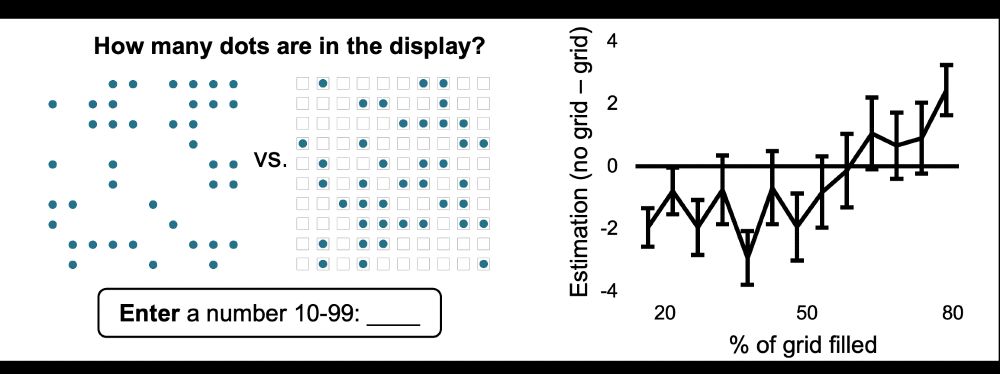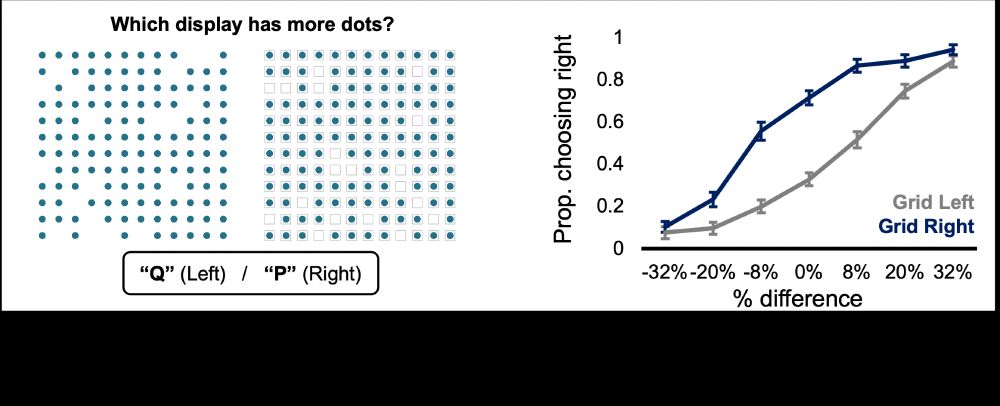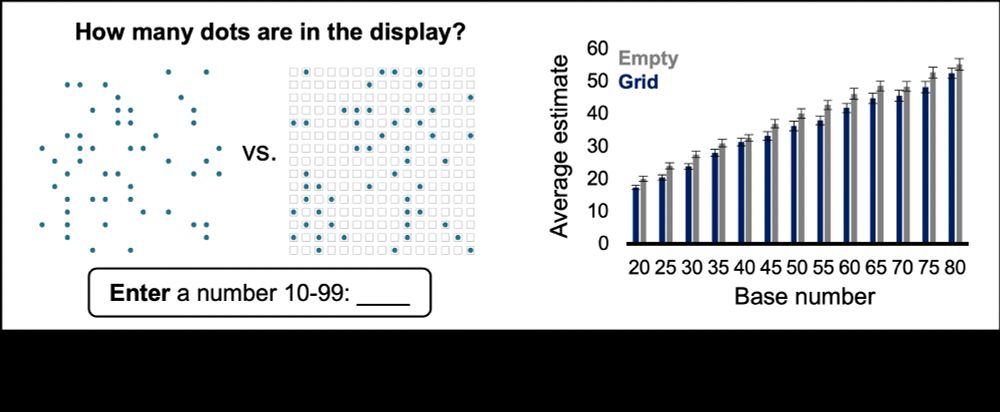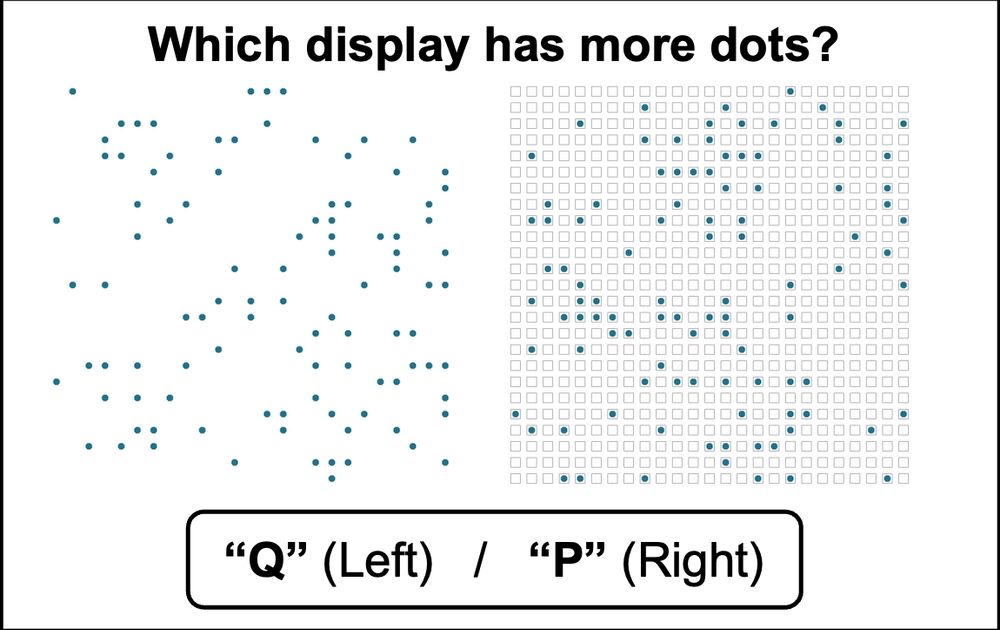Gabe Waterhouse
@gabrielwaterhouse.bsky.social
Research Assistant with @samiyousif.bsky.social
studying perception and cognition
studying perception and cognition
These results have broader implications for the ways in which we perceive number. Perhaps our perception of number isn’t absolute, but relative — constructed in relation to other numerical information. Kind of like a numerical “Ebbinghaus illusion”.

June 26, 2025 at 4:15 PM
These results have broader implications for the ways in which we perceive number. Perhaps our perception of number isn’t absolute, but relative — constructed in relation to other numerical information. Kind of like a numerical “Ebbinghaus illusion”.
Interestingly, it seems that the distortion of numbers we found in the previous experiments was correlated with the proportion of the grid filled by the dots. When grid occupancy was low, people underestimated, and when the grid occupancy was high, people overestimated.

June 26, 2025 at 4:15 PM
Interestingly, it seems that the distortion of numbers we found in the previous experiments was correlated with the proportion of the grid filled by the dots. When grid occupancy was low, people underestimated, and when the grid occupancy was high, people overestimated.
We wanted to see whether these underestimation effects persisted no matter the occupancy of the grid. Much to our surprise, however, we found something even more interesting: When the grids were more than 50% full, people tended to overestimate the number of dots in the display.

June 26, 2025 at 4:15 PM
We wanted to see whether these underestimation effects persisted no matter the occupancy of the grid. Much to our surprise, however, we found something even more interesting: When the grids were more than 50% full, people tended to overestimate the number of dots in the display.
In a standard comparison task and estimation task paradigm, we found that people tended to underestimate the number of dots in displays with a grid-like pattern of boxes (just like you may have seen above). So what’s going on here?

June 26, 2025 at 4:15 PM
In a standard comparison task and estimation task paradigm, we found that people tended to underestimate the number of dots in displays with a grid-like pattern of boxes (just like you may have seen above). So what’s going on here?
Here’s the basic effect. You see two displays of dots. Which has more? If you’re like most people, you’d say the left, but in fact they are the same.

June 26, 2025 at 4:15 PM
Here’s the basic effect. You see two displays of dots. Which has more? If you’re like most people, you’d say the left, but in fact they are the same.

